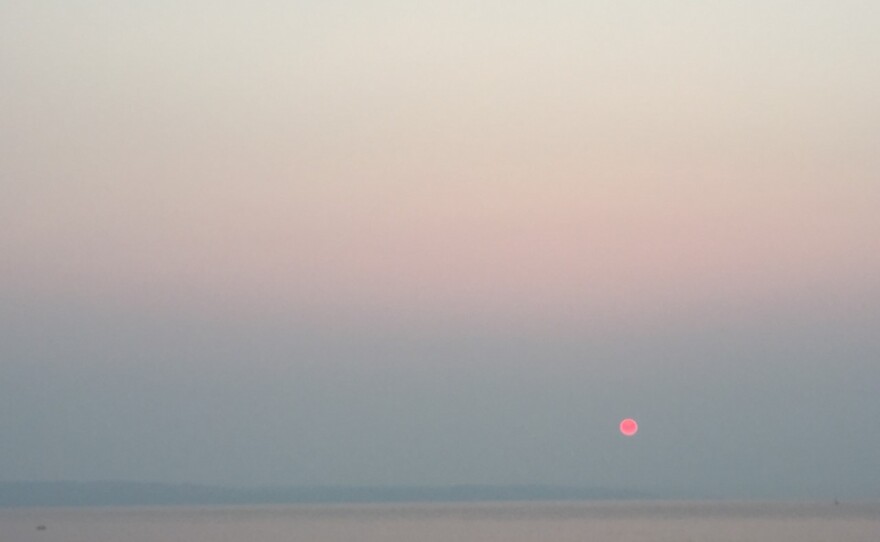There are more than 20 wildfires burning in British Columbia right now, but that’s just one reason why the air in Seattle is junk right now.
KUOW’s Bill Radke spoke with Dr. Sverre Vedal of the University of Washington — he’s a pulmonary physician who studies the effects of air pollution.
Bill Radke: Why are we getting all this Canadian smoke?
Dr. Sverre Vedal: It's an unusual sort of circumstance. Normally at this time of year, the wind direction is to the east, but it isn't now. It's to the west and to the south.
Coupled with that is the obvious heat wave that we're having, which reflects a high pressure phenomenon. That basically translates into air that does not disseminate or disperse well, so the air is sort of trapped here.
So it's a confluence of three things: wildfires, temperature and wind direction.
Does this smoke cool the heat significantly?
No, it really doesn't have much effect on that.
How is this smoke affecting folks here?
We have a pretty good idea of how it's affecting them, which is particularly focused on people who have preexisting illness, particularly respiratory or lung illnesses — asthma and chronic obstructive lung disease. And somewhat surprisingly, and this has been known for over 10 years now, people with heart disease.
What's that connection?
There are many theories as to what the mechanism is, but one of them is that you get some sort of inflammation in the lung from breathing in particles and other pollutants, and that that kind of spills over into the rest of your body.
Should the general population be considered?
Yes, particularly at the concentrations that have been seen in south Tacoma, Puyallup and South Park, for example, there have been concentrations that have been categorized as being unhealthy for people that are even not susceptible.
Are these valleys?
In this case, it just happens to be bad luck depending on where the fires are coming or where the smoke is coming from.
But it's not possible to predict who might be susceptible. It’s really more a matter of trial and error. For example, I don't think I am particularly susceptible. I've been to China a few times, but there may be people who do not have underlying disease who could be susceptible to these types of exposures.
How did your China experience compare to today's haze?
It's quite different. The high concentrations here are around what we call 150 micrograms per cubic meter of this fine particle concentration that you find in China. They would have been 10 times that: 1,500 or so. So what we're seeing here now is relatively commonplace in Beijing.
https://youtu.be/kH5APw_SLUU





